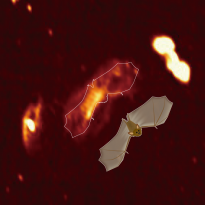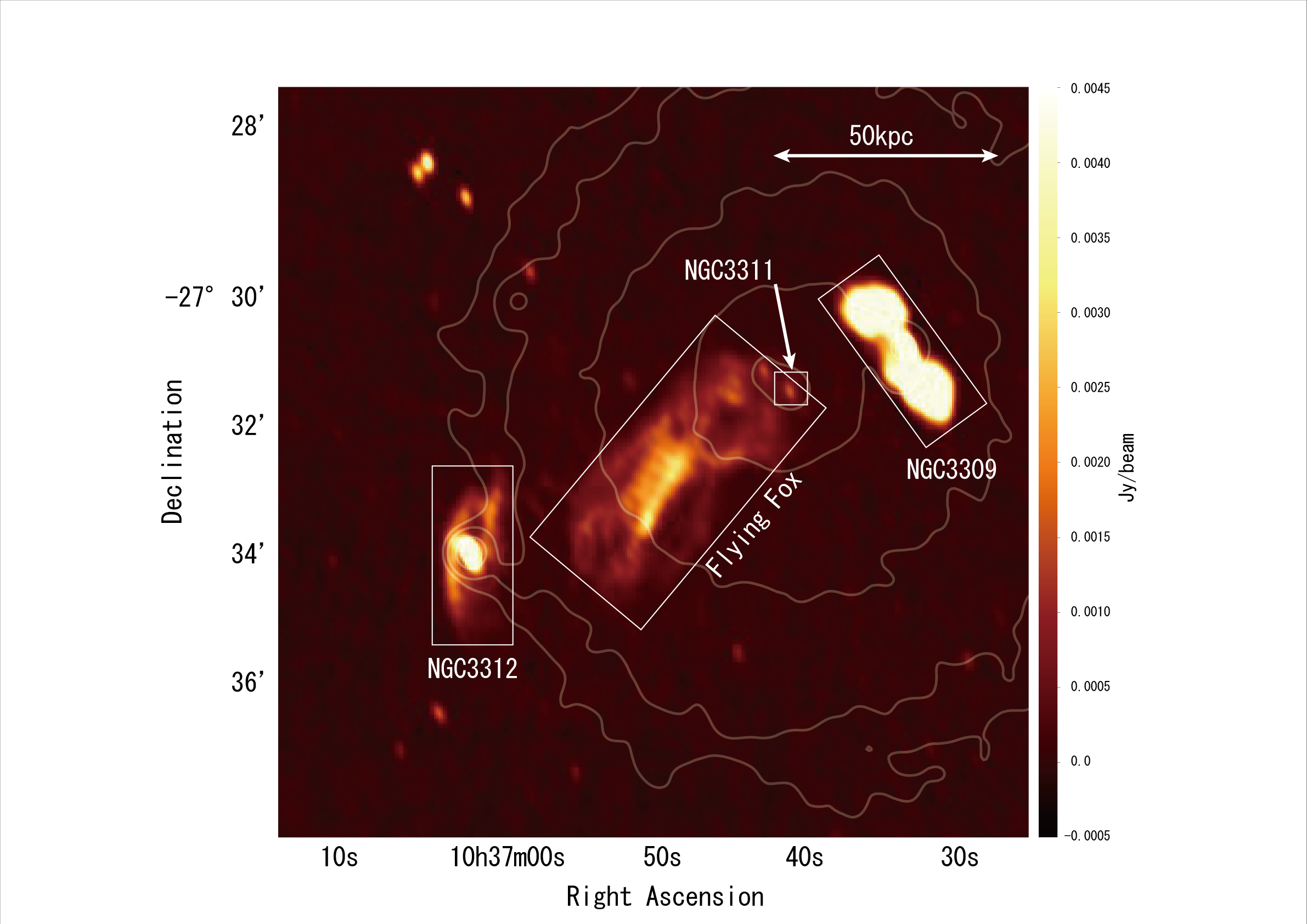Inexplicable Flying Fox found in Hydra Galaxy Cluster

High sensitivity radio observations have discovered a cloud of magnetized plasma in the Hydra galaxy cluster. The odd location and shape of this plasma defy all conventional explanations. Dubbed the Flying Fox based on its silhouette, this plasmawill remain a mystery until additional observations can provide more insight.
When you take an eye exam and look at small or distant objects, you can tell that there is something there, but you cannot see its shape. The same is true in radio astronomy.
A team led by Kohei Kurahara at the National Astronomical Observatory of Japan analyzed observations from the Giant Metrewave Radio Telescope (GMRT) targeting the Hydra galaxy cluster, located over 100 million light years away in the direction of the constellation Hyrda. By applying the recent analysis techniques to the GMRT (Giant Metrewave Radio Telescope) data archive, the team was able to discover a cloud of magnetized plasma shaped like a flying fox which has never been reported before. /p>
Radio/optical/IR/X-ray images failed to find a host galaxy at the center of the Flying Fox. This combined with its elongated shape, has left astronomers scratching their heads; the Flying Fox does not fit the model for any known class of objects. New observing facilities, like the Square Kilometre Array currently under construction, are expected to study the Flying Fox and provide new insights into the nature and history of this unusual object.
Figure

Links
- National Astronomical Observatory of Japan “Inexplicable Flying Fox found in Hydra Galaxy Cluster”
- Kobayashi-Maskawa Institute for the Origin of Particles and the Universe, Nagoya University “Discovery of Mysterious Radio Emissions in the Hydra Cluster”
Grant List
- This work was supported by JSPS KAKENHI Grant Numbers JP21H01135, JP20H00157.
- Nagoya University Interdisciplinary Frontier Fellowship' supported by Nagoya University (JPMJFS2120: JST, the establishment of university fellowships towards the creation of science technology innovation).
CSS not active
JavaScript not active
